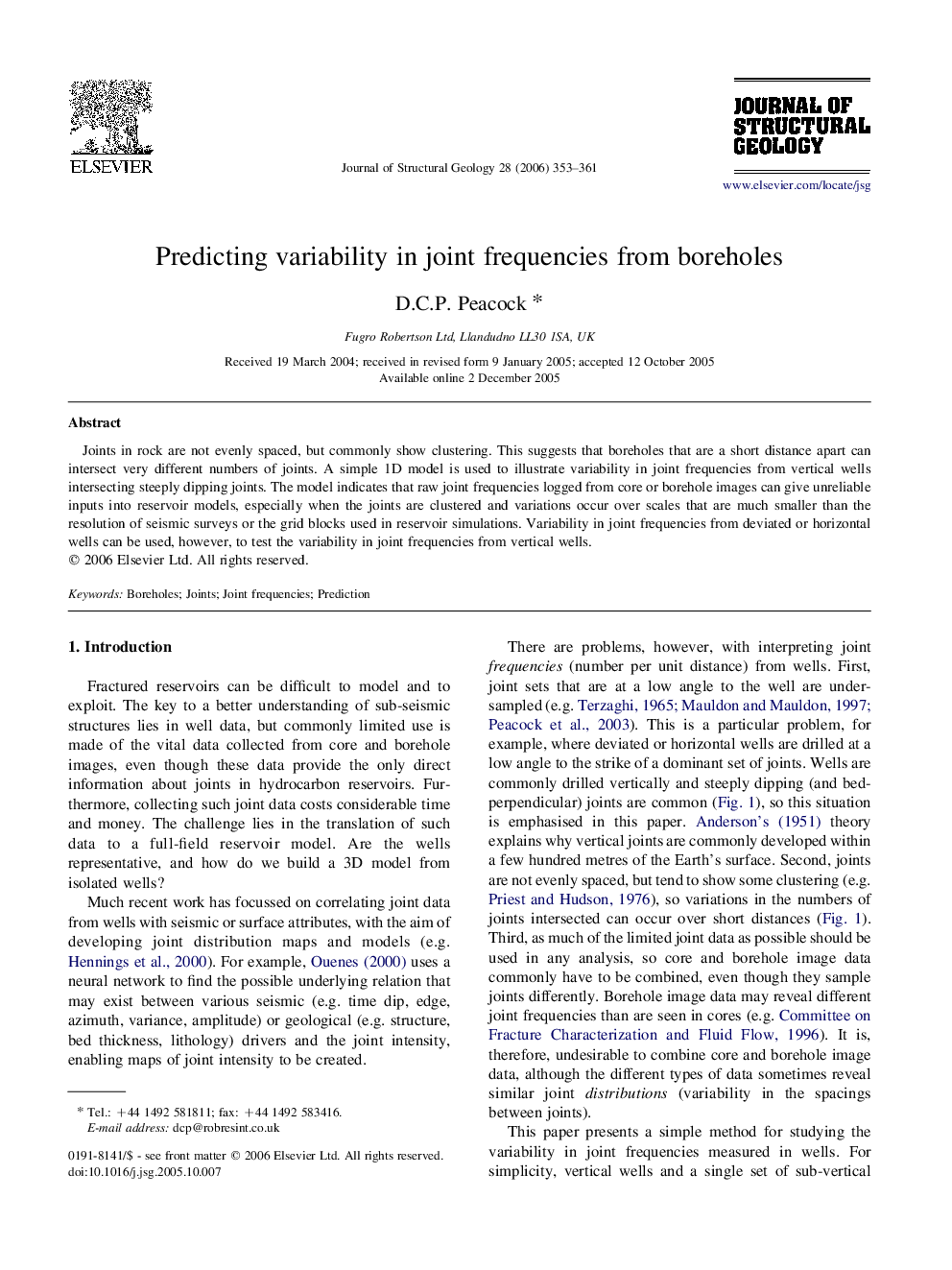| Article ID | Journal | Published Year | Pages | File Type |
|---|---|---|---|---|
| 4734293 | Journal of Structural Geology | 2006 | 9 Pages |
Joints in rock are not evenly spaced, but commonly show clustering. This suggests that boreholes that are a short distance apart can intersect very different numbers of joints. A simple 1D model is used to illustrate variability in joint frequencies from vertical wells intersecting steeply dipping joints. The model indicates that raw joint frequencies logged from core or borehole images can give unreliable inputs into reservoir models, especially when the joints are clustered and variations occur over scales that are much smaller than the resolution of seismic surveys or the grid blocks used in reservoir simulations. Variability in joint frequencies from deviated or horizontal wells can be used, however, to test the variability in joint frequencies from vertical wells.
